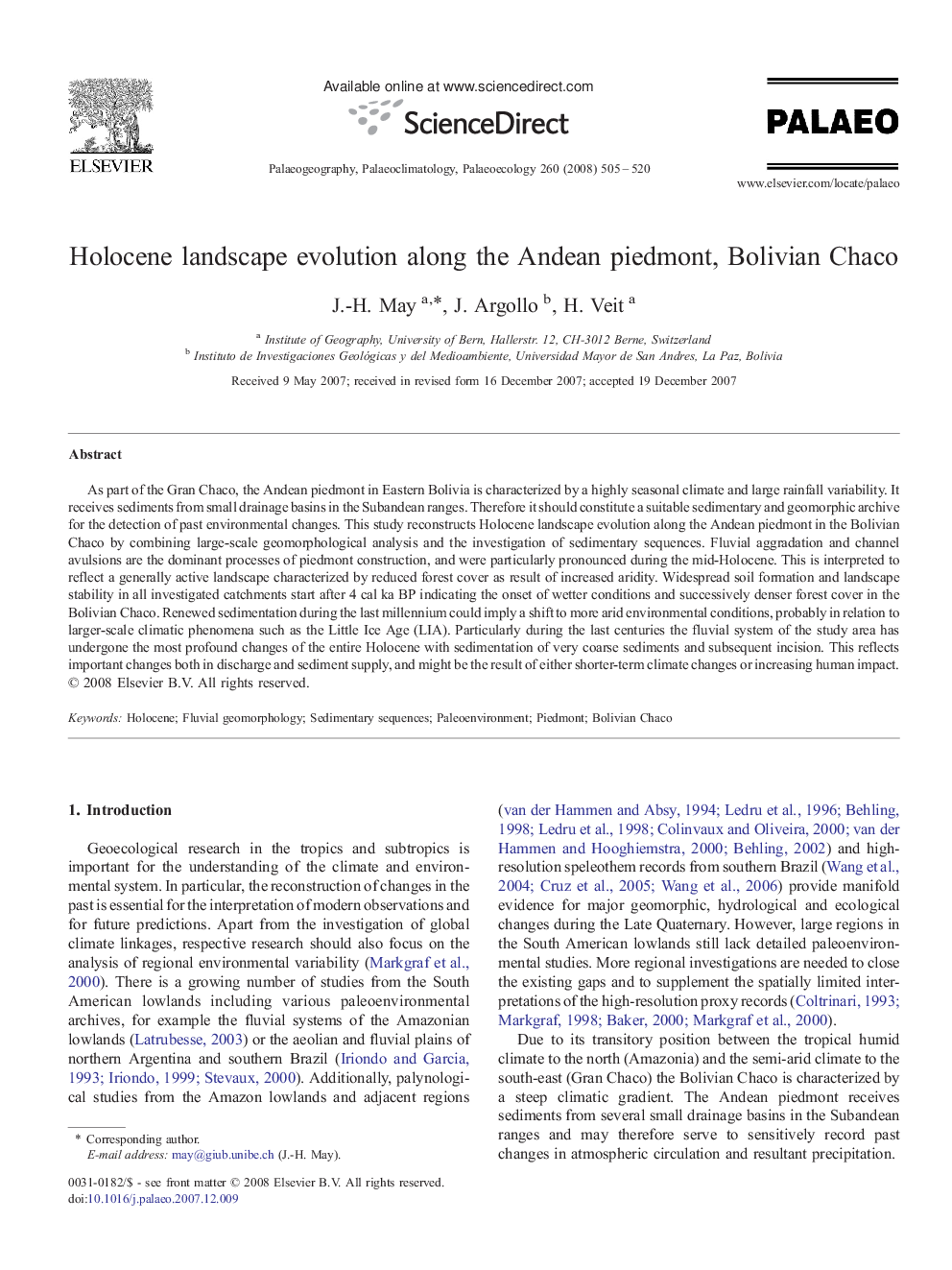| Article ID | Journal | Published Year | Pages | File Type |
|---|---|---|---|---|
| 4468568 | Palaeogeography, Palaeoclimatology, Palaeoecology | 2008 | 16 Pages |
As part of the Gran Chaco, the Andean piedmont in Eastern Bolivia is characterized by a highly seasonal climate and large rainfall variability. It receives sediments from small drainage basins in the Subandean ranges. Therefore it should constitute a suitable sedimentary and geomorphic archive for the detection of past environmental changes. This study reconstructs Holocene landscape evolution along the Andean piedmont in the Bolivian Chaco by combining large-scale geomorphological analysis and the investigation of sedimentary sequences. Fluvial aggradation and channel avulsions are the dominant processes of piedmont construction, and were particularly pronounced during the mid-Holocene. This is interpreted to reflect a generally active landscape characterized by reduced forest cover as result of increased aridity. Widespread soil formation and landscape stability in all investigated catchments start after 4 cal ka BP indicating the onset of wetter conditions and successively denser forest cover in the Bolivian Chaco. Renewed sedimentation during the last millennium could imply a shift to more arid environmental conditions, probably in relation to larger-scale climatic phenomena such as the Little Ice Age (LIA). Particularly during the last centuries the fluvial system of the study area has undergone the most profound changes of the entire Holocene with sedimentation of very coarse sediments and subsequent incision. This reflects important changes both in discharge and sediment supply, and might be the result of either shorter-term climate changes or increasing human impact.
